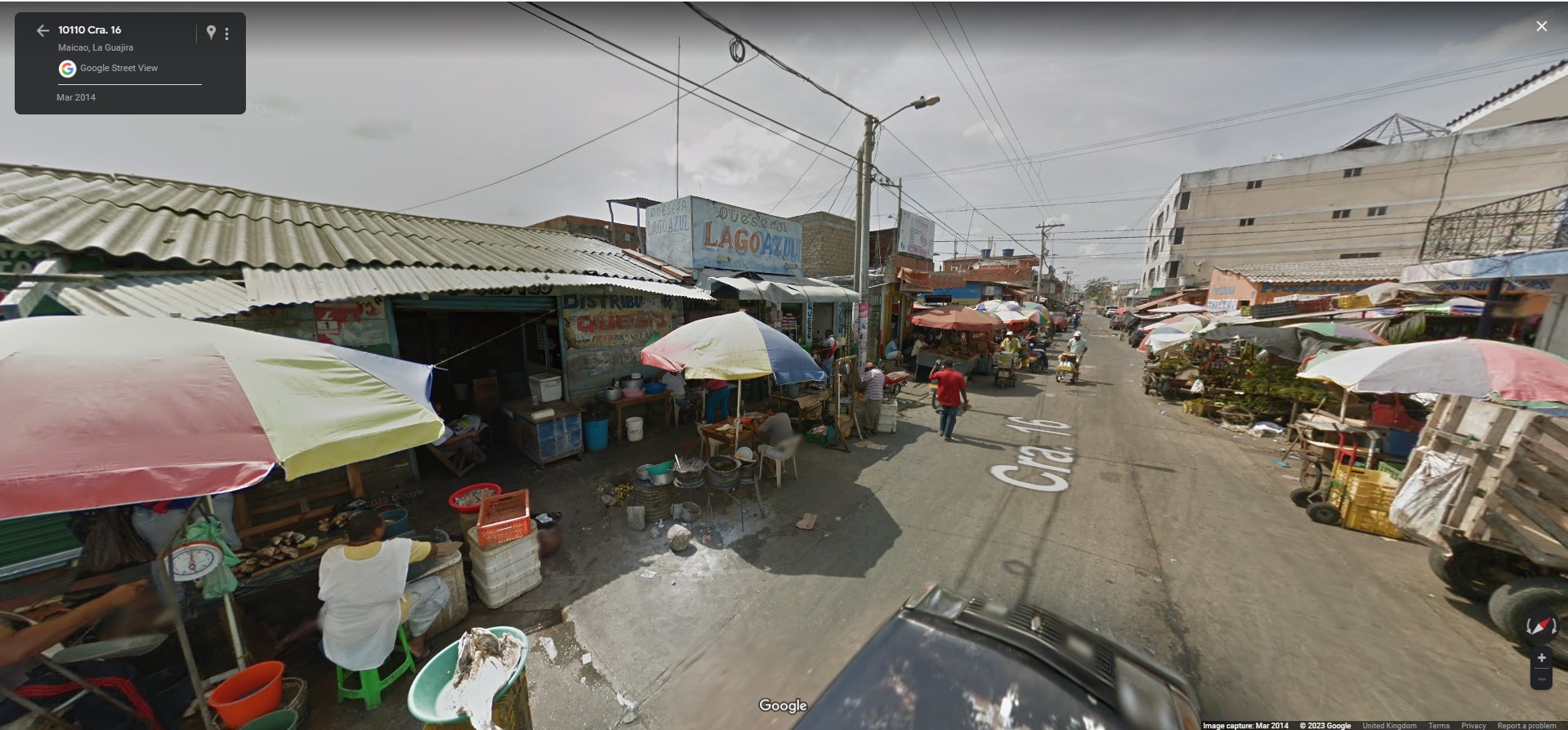The Year Extinct Animals Returned to the Menu
THE RESTAURANT CUSTOMERS SMACKED THEIR LIPS TOGETHER in anticipation of the slung up reptile eggs and flayed carcasses lined on the chopping board, while in a city across the country drivers halted a main road´s traffic to scurry one of those same reptiles to safety; a single batch of these iguanas feeds the village´s mayor, police force and locksmith, while debating their eating feeds the city´s environmental activists, journalists and policy makers.
In La Guajira the Buffalo are green and not hitched to wagons, rather they are in the boots of cars passing police checkpoints. These small trunk loads of illegality are the less castigated mode of crime in the department, where homicides, armed robberies and armed groups fill the majority of the crime pages. Sufficiently read then in those perils that happen at that bridge, such and such a town or on those roads where two bodies were found in the past week, my print out of the Geneva Convention on protecting journalists felt flimsy in the hand when I arrived there. The adrenaline thankfully outweighed the lawlessness, surging most when an unlicensed and lightless motorcyclist wielded a finger gun and shouted ´robbing´ at me as we drove on an unlit motorway at night. I used the sparse traffic as a wedge and buttress against this undesirable, blaring the S.O.S call with my bike´s horn at them, and with bated breath I reached a police checkpoint.
´It is common here.’ The officer said. ´What do you expect us to do, stop a man on his bike?´ He shrugged, turning back to his seat.
Displeased with his reasonable uselessness, I left bandit highway in relieved disappointment. I woke up early the next morning frustrated, and set to researching an iguana delicacy that had a three months prison sentence as its side dish, tracking its popularity to Fonseca, a village on the route of that same highway; to those Bogotanas who have never left the capital: should you too travel on it, you might be wise to carry a cannister of these eggs as legal poison against bandits, pelting them so they have rare eggs on their faces and giving highway officers reason to pursue these vultures to their nests.
I arrived in Fonseca by daylight, the village where iguanas are eaten as a dietary tradition and where the heat exhausts even the acclimatized street dogs. No iguana buffets were on the high street and chicken bones were littered on the pavements in lieu of reptilian spines. Behaving as one does under a taboo, I made some meek inquiries to the reptiles’ whereabouts which, returning either no information or mild anger, seemed to be the trip thwarted. I found a place for the night.
It was near 5am on New Year´s Day in Riohacha, La Guajira, at a restaurant serving extinct turtles when I felt that same despondency at wasted journeys and dead-end cul-de-sacs to my investigations.
´We have turtles here.´ The street touter said, waving me to a table.
The lunch lady ladling out the turtle soup waved me back out with equal determination after I introduced myself as a journalist. Likewise when the second restaurateur distrusted me as the police and clammed up, claiming to have been arrested once, the turtle there was suddenly taken off the menu. The day in Fonsenca had me adrift because of this reluctance, and before bedding I made a last inquiry into the Iguanas Verdes (green iguanas) and with that found a stroke of luck: a haul would arrive in the morning and I could interview a cook who serves them.
I had by this point travelled the majority of La Guajira, finding its people sustain themselves in not the lush jungles for which Colombia is pictured, but Maicao for instance, a dust road, petrol station and shack-houses-slapped-with-paint of a town near the Venezuelan border, where nearly every neighborhood is rundown and homogenous under-everything, and where most striking to my memory a homeless person laid face down in a brown puddle with beside him the sundried pavement. Yet on its exits are signposts to Bogota (1000km); add another thousand of them and its people still wont leave for its supposed promise, these traces of connectedness to the capital ending there. And so the two regions maintain this distant acknowledgment in being knowingly incompatible. For Maicao this means ill-suited laws that for one turtle seller in its fetid smelling market meant his business being scaled down.
´[Buying turtle] is very expensive these days, even $1 million COP (£200).´ He ladled two trays of the soup to two young men and closed the pot´s lid.
´We can sell four or five a week.’ He said, ‘Everyone eats them here.’
His five turtles might be allowed by the hunting and subsistence laws, but they are no longer the golden geese that once funded the university tuitions of his children; the broth is bitter and eggs watery in lawless La Guajira, where contraband-ism is justified against those who chew all the fat in Bogota.
 A Google street view of Maicao public market.
A Google street view of Maicao public market.
The iguanas are eaten early and so at 7am I went to the restaurant in Fonseca, a yard with plastic furniture and no signage. The dish is a tradition for La Guajirans, but so is the poverty that urges them to eat iguana and turtles to begin with. The Humboldt Institute and Colombian government addressing the real scourge would not be in prohibiting their eating as is the case, but by sending 10,000 cows on newly signposted roads from Bogota that say ´to La Guajira´ (1000km).
Written by Jacob Hamilton in May 2021
Photography by Juan Jose Media and Willy Pomares.